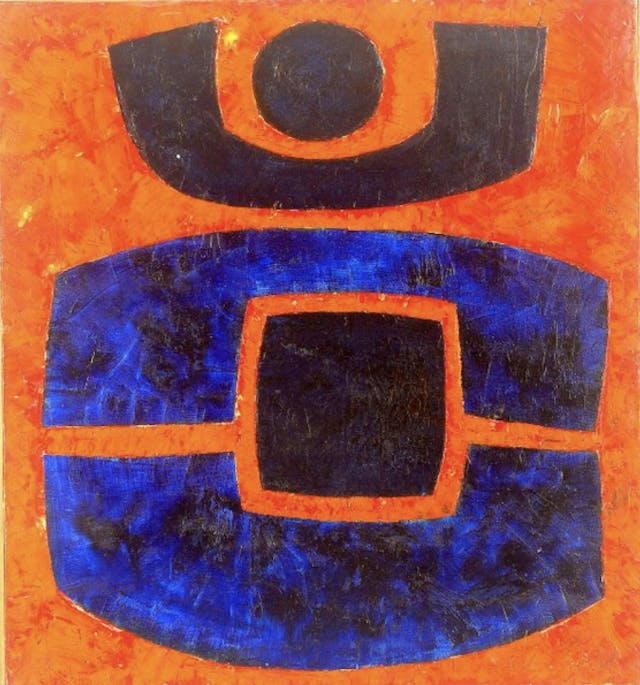
- Essay
Cosmopoetics of Globality
Patrick Chamoiseau
Kamel Lazaar looks back on the history of the Kamel Lazaar Foundation and advances the idea of culture as a critical ‘infrastructure’.
London hardly needs another museum, another gallery, or another theatre. But what it does need is something different: a window into the soul of our region. This new cultural centre is not about adding another dot to London’s cultural map; it is about bringing a new voice into the conversation – a voice that carries the warmth, empathy, imagination, and complexity of the Arab world.
I come from Tunisia: a peculiar and colourful country, relatively poor, but rich in history, culture, and the character of its people. It is no coincidence that the Sumud flotilla started its journey from Tunis. I come from a very modest family. Yet through happy accidents, hard work, and the kindness of others, I found my way – and at an early stage I discovered my passion for art. That passion, it seems, is contagious. My daughter caught the same bug, and I like to think it runs in our blood.
It was with such thoughts in mind, although they were not as clear then as they are now, that I set up the Kamel Lazaar Foundation (KLF) in 2005. In a world fractured by political antagonisms, cultural indifference, and economic divides, I hoped the Foundation would offer a counterpoint. The intention was that it would produce meaning, sustain heritage as a living practice, and challenge complacent narratives about who we are. I have often said, in private and in public, the following: ‘Arabs do not know Arabs, and the West does not know Arabs.’ It was in this context that KLF’s cultural initiatives aimed to bridge these gaps in understanding by fostering visual culture as a medium of mutual recognition.
One abiding tenet of the Foundation was that art matters because it resists the reduction of culture to propaganda, heritage to tourism, and identity to rigid categories. It gives communities agency to negotiate change, fosters resilience, and creates alternatives to exclusion and violence. For Tunisia and the wider Arab world, where heritage is underfunded, looted, or neglected, art and cultural practice stand as one of the last strongholds of collective memory and imagination.
Visual culture transcends entrenched political or religious positions; it opens spaces for debate, empathy, and even disagreement, without collapsing difference. These acts of cultural imagination counter reductive narratives about the Arab world and invite audiences across geographies to recognise shared vulnerabilities. Dialogue through art does not erase conflict but reframes it as a productive exchange.
The Foundation was born of this conviction. From building a significant collection of Arab art, to commissioning research, supporting publications, and funding projects that connect the region globally, the Foundation’s work has always sought to act as a platform – not just for the arts, but for civil society more broadly. KLF’s role has been to catalyse initiatives, seed institutions, and foster the belief that culture can and must form the backbone of any society’s infrastructure.
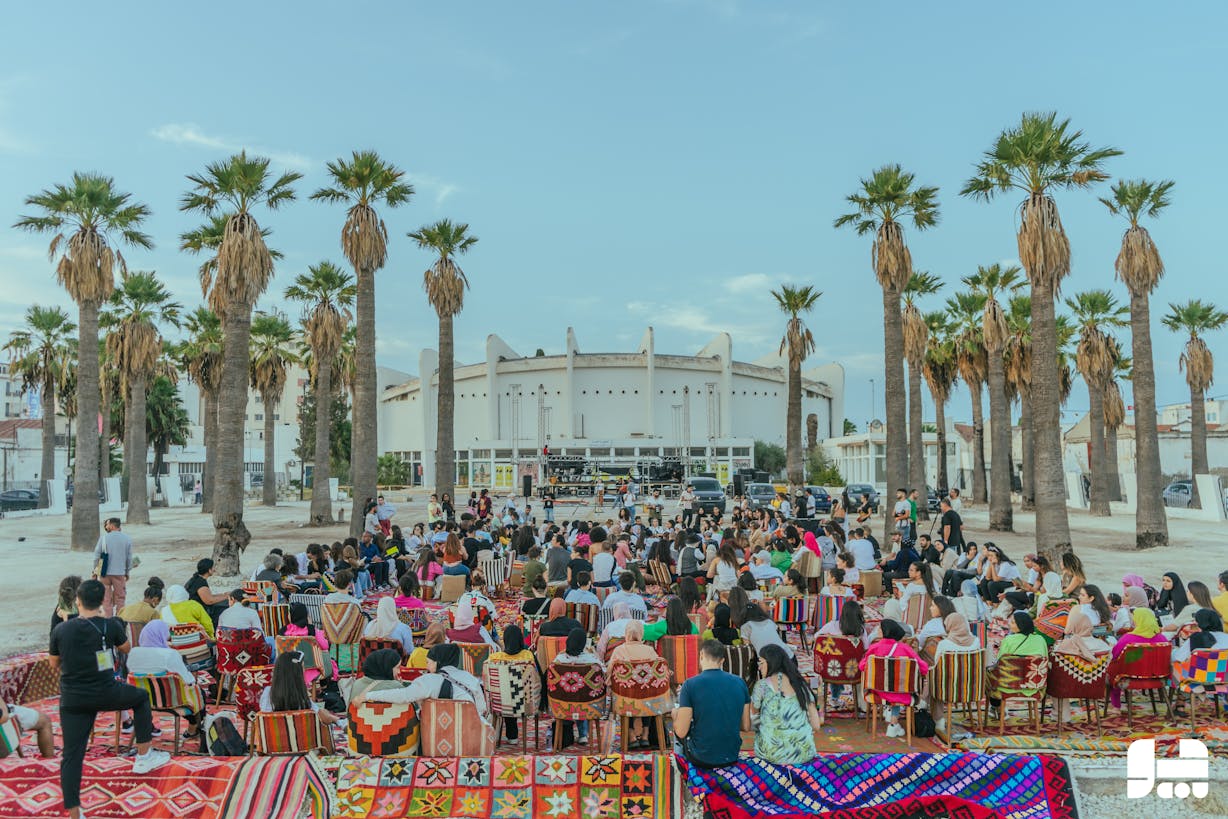
Gaza Reader performance (2024), curated by Lina Lazaar. JAOU Tunis Biennale, 2024. Photo: Bedoui Dorsaf.
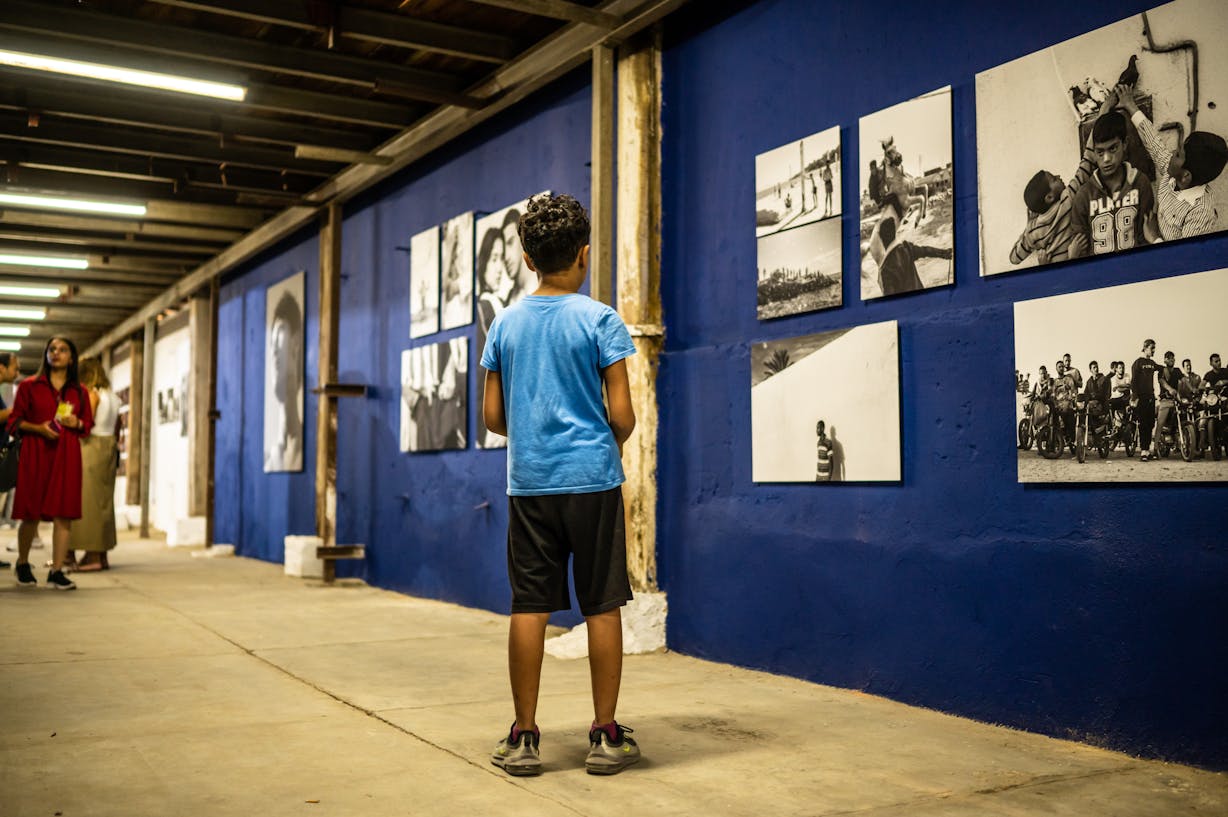
Assembly (2024), group exhibition curated by Taous Dahmani. Installation view: JAOU Tunis Biennale, 2024. Photo: Bayram Mrad.
One such platform was Ibraaz.org, established by the Foundation in 2011 as a leading online forum for visual culture in North Africa and the Middle East. Ibraaz publishes essays, interviews, artists’ projects, and critical writing from across the region and the diaspora. It provides not just visibility, but a space for serious intellectual engagement with the politics of art, image-making, and cultural production in the Arab world. For more than a decade, it has become a publishing initiative, a discursive site for both scholars and artists seeking to understand the region’s complexities, and an indispensable living archive. It is precisely this level of impact that we want to develop in our current setting in London, with the additional bonus that we will have a physical space to welcome people to and a full programme of events to encourage engagement.
During this time, the Foundation also supported JAOU, an important cultural platform that rethinks how art engages with public space and civil society in Tunisia and beyond. Staged in Tunis and other regional sites, JAOU transforms historic and urban locations into arenas for exhibitions, performances, and debates, making art accessible outside institutional confines. Its significance in fostering dialogue between artists, intellectuals, and the wider public, while addressing pressing political, social, and cultural questions, has been definitive in how we think about institution building as a model of collaboration. By bridging local and international perspectives, JAOU exemplifies how contemporary art can act as a catalyst for civic participation and cultural renewal.
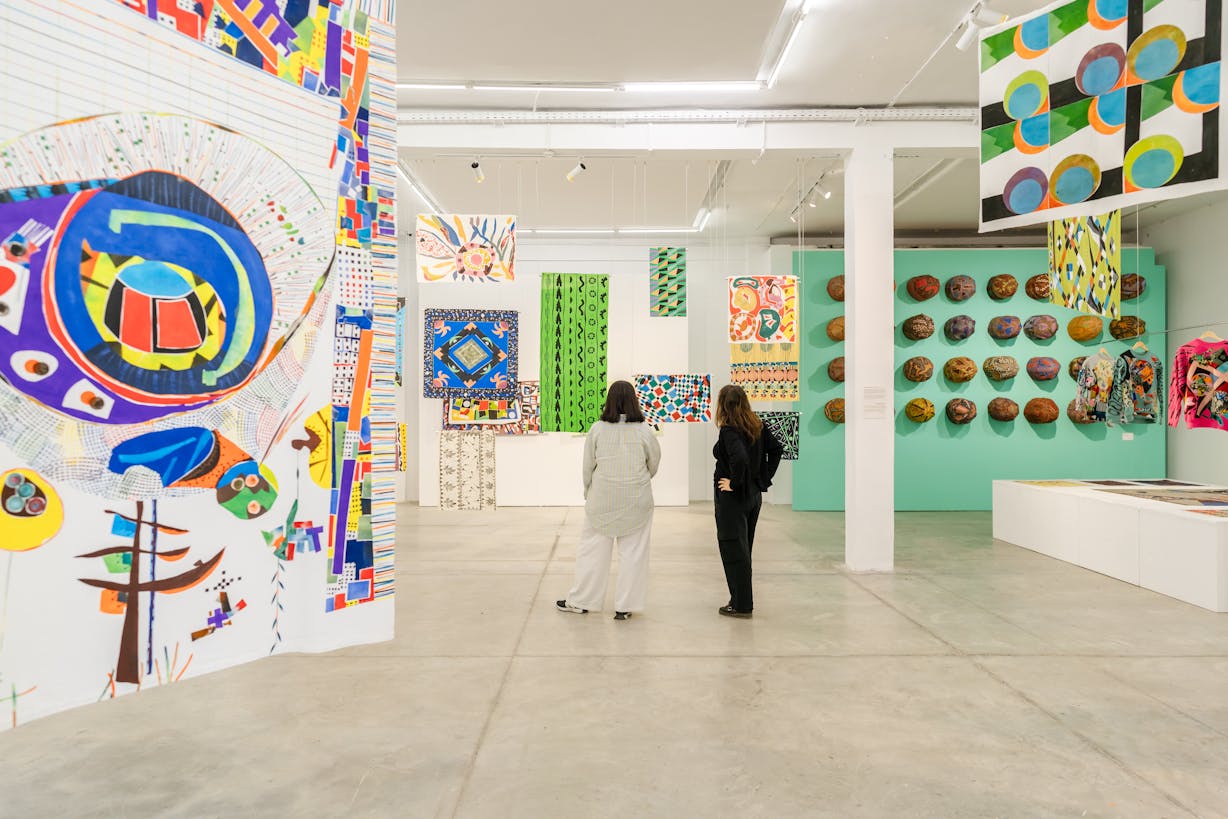
Hamid Zenati, The Birds Are Chirping Above the Tree (2025), curated by Nadine Nour al Din. Installation view: B7L9, 2025. Photo: Mehdi Ben Tmessek.
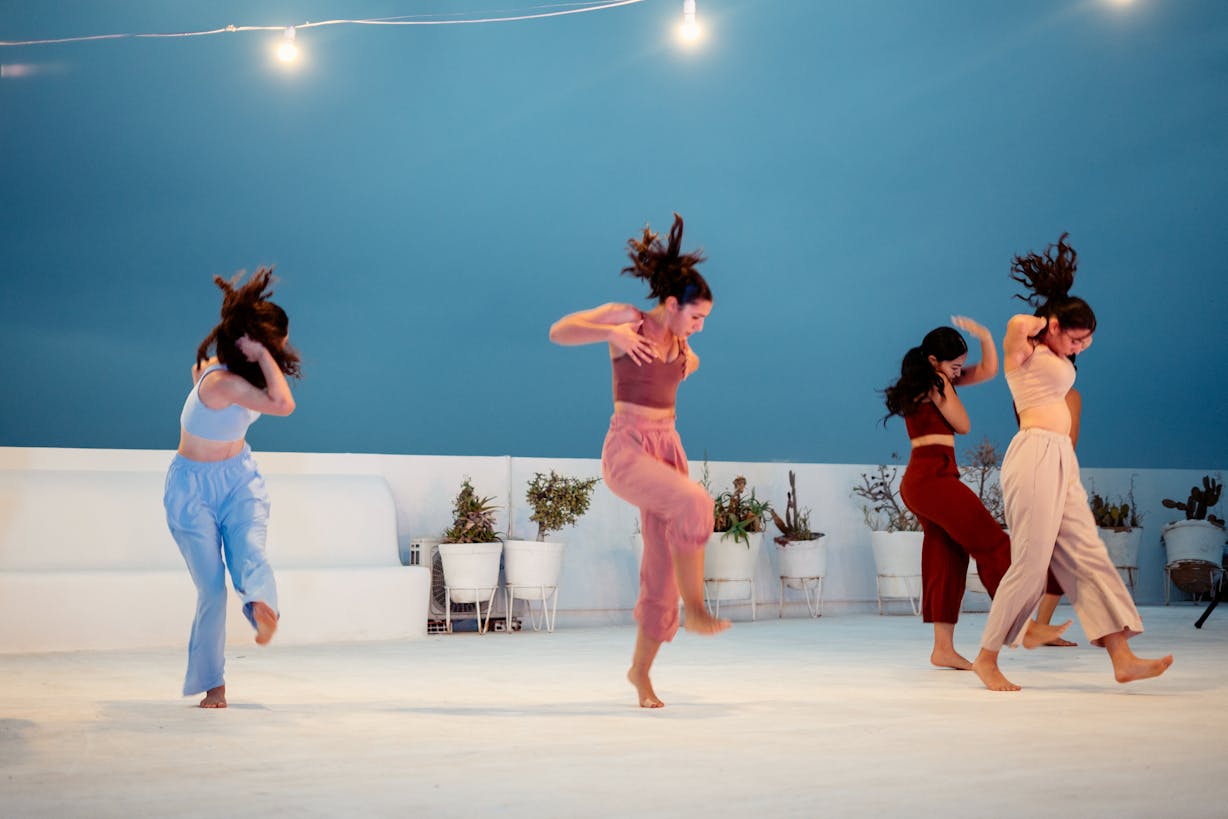
Revelation (2025), performance choreographed by Cyrine Kalai. B7L9, 2025. Photo: Asma Barhoumi.
Throughout this journey, I was never alone. One of the greatest joys of my life has been walking this path alongside my daughter, Lina, who has overseen and initiated many of these projects. Fearless, creative, and determined, she has shaped the very soul of the Foundation’s work. From our earliest initiatives to opening a new space in London, she has carried our vision forward with conviction and imagination.
One of the deepest lessons came when we turned our attention to community art centres – spaces embedded in neighbourhoods where art was not a luxury, but part of everyday life. An ideal example of this in practice is B7L9, which the Foundation inaugurated in 2019 in Bhar Lazreg, a northern suburb of Tunis. B7L9 was designed not only as an exhibition and residency space, but also as a cultural hub embedded in a community often marginalised from Tunisia’s mainstream art circuits. It has hosted exhibitions, workshops, screenings, and residencies, making contemporary art accessible to diverse audiences while also fostering critical conversations about the social role of culture. Its location, away from elite urban centres, symbolises the belief that art belongs within everyday life and should be an inclusive practice.
B7L9 shows us that such centres can do more than present art. They can counter exclusion. They can give children, families, and young people the tools for expression, for connection, for transformation. In societies marked by fracture or inequality, these spaces become places of possibility – reminders that culture is not something distant or elite, but something to be lived.
Collaboration is the lifeblood of future cultural practice. We need to embrace participatory and inclusive models: involving local and international partners in decision-making, valuing marginalised communities, and fostering educational initiatives that embrace difference and the future. KLF’s Tilal Utique project exemplifies this future: conceived as a living prototype, it combines artist residencies, ecological sustainability, and community engagement.

By the doorstep of the guest house, Tilal Utique. Courtesy of KLF 2025.
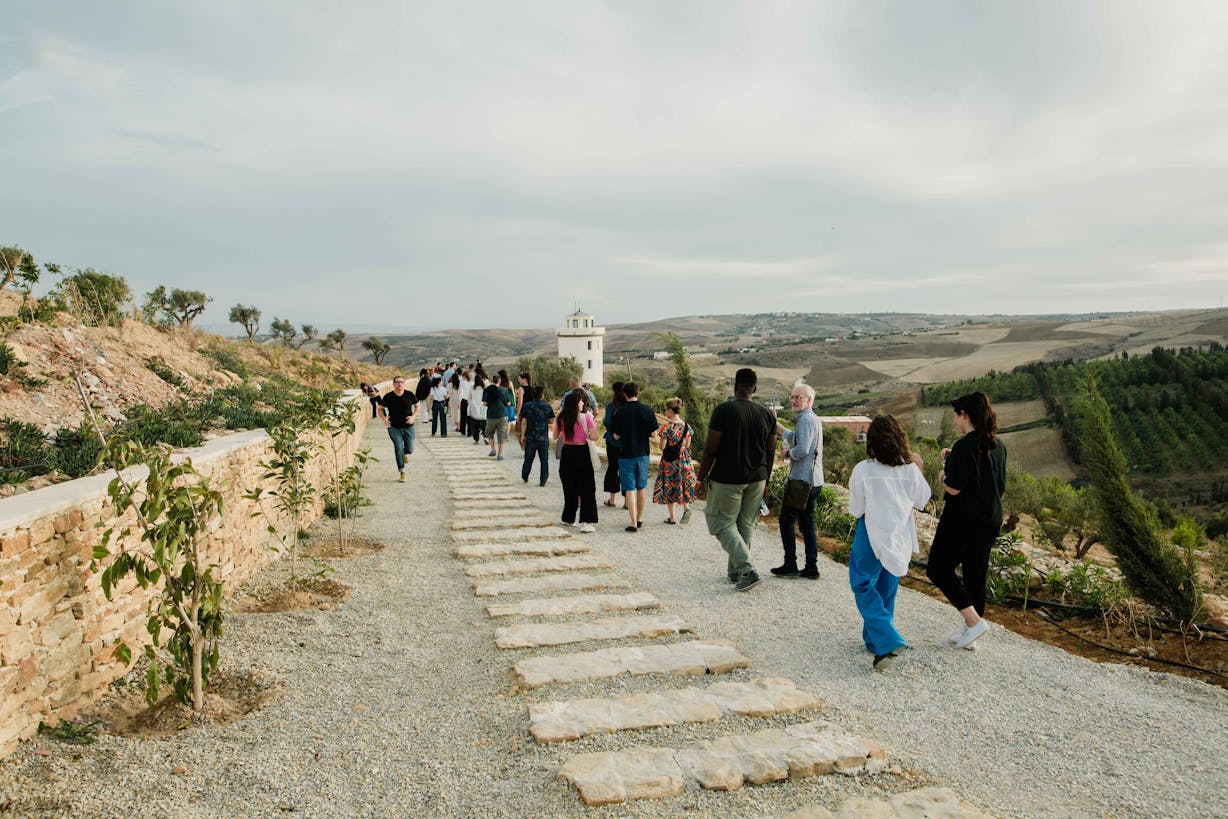
Walking down to the guest house, Tilal Utique. Courtesy of KLF 2025.
Tilal Utique is situated in a cultural complex in the countryside near Tunis, so it is easily accessible from the city and neighbouring area. I envisioned it as a space that would bring together nature, heritage, and contemporary practice, as a retreat and a site for artistic experimentation. In keeping with our commitment to decentralising cultural infrastructures in Tunisia – and creating opportunities outside the capital – it seeks to reimagine the relationship between art, landscape, and local communities.
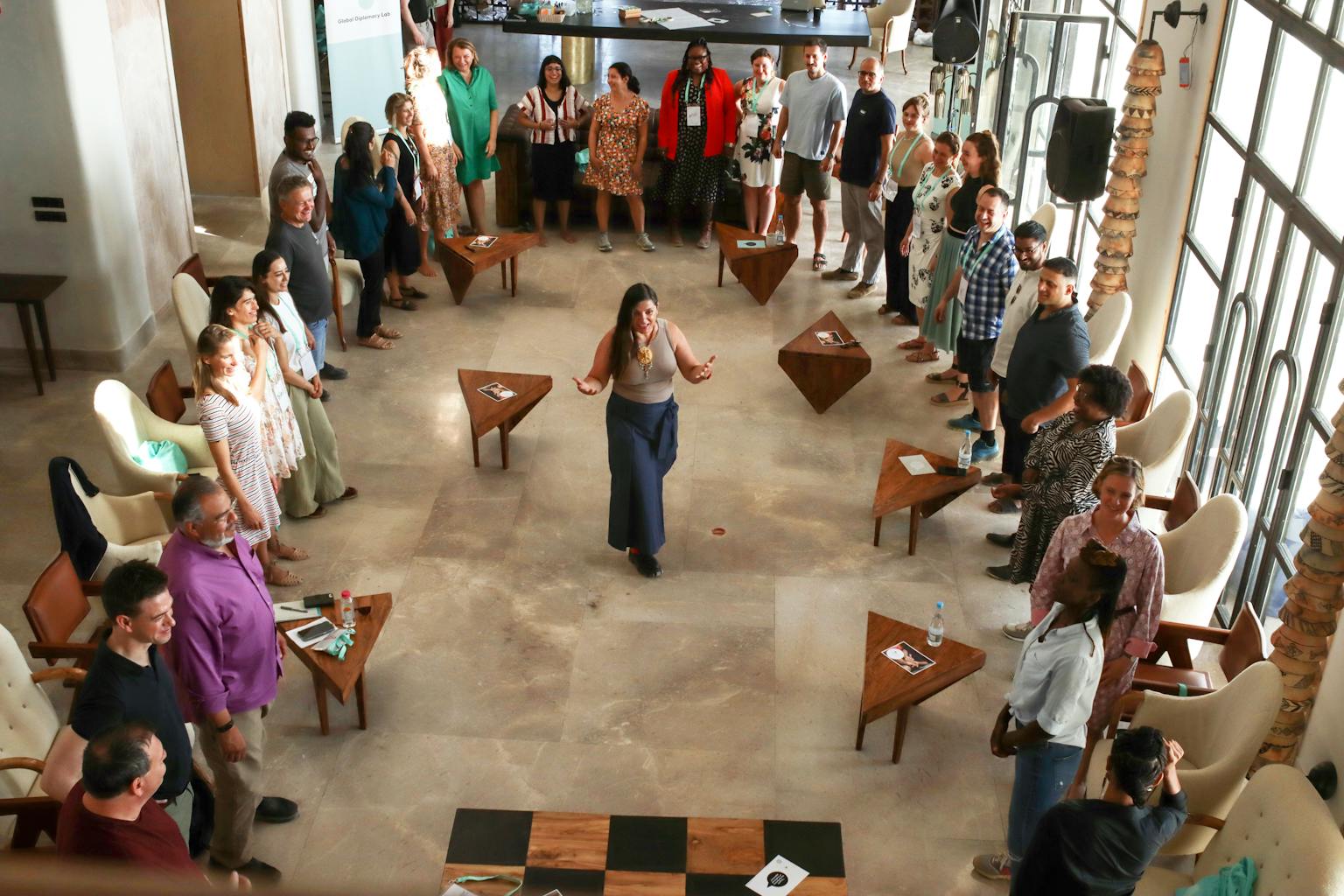
Inside the guest house, Tilal Utique. Courtesy of KLF 2025.
Collaboration across these projects is not symbolic but structural: building jobs, protecting biodiversity, and linking artistic practice to social innovation. In a divided world, cultural collaboration must avoid exoticising difference; instead, it should cultivate solidarity, not charity. This entails reciprocity, co-production, and recognition that culture is an investment in people, not a luxury.
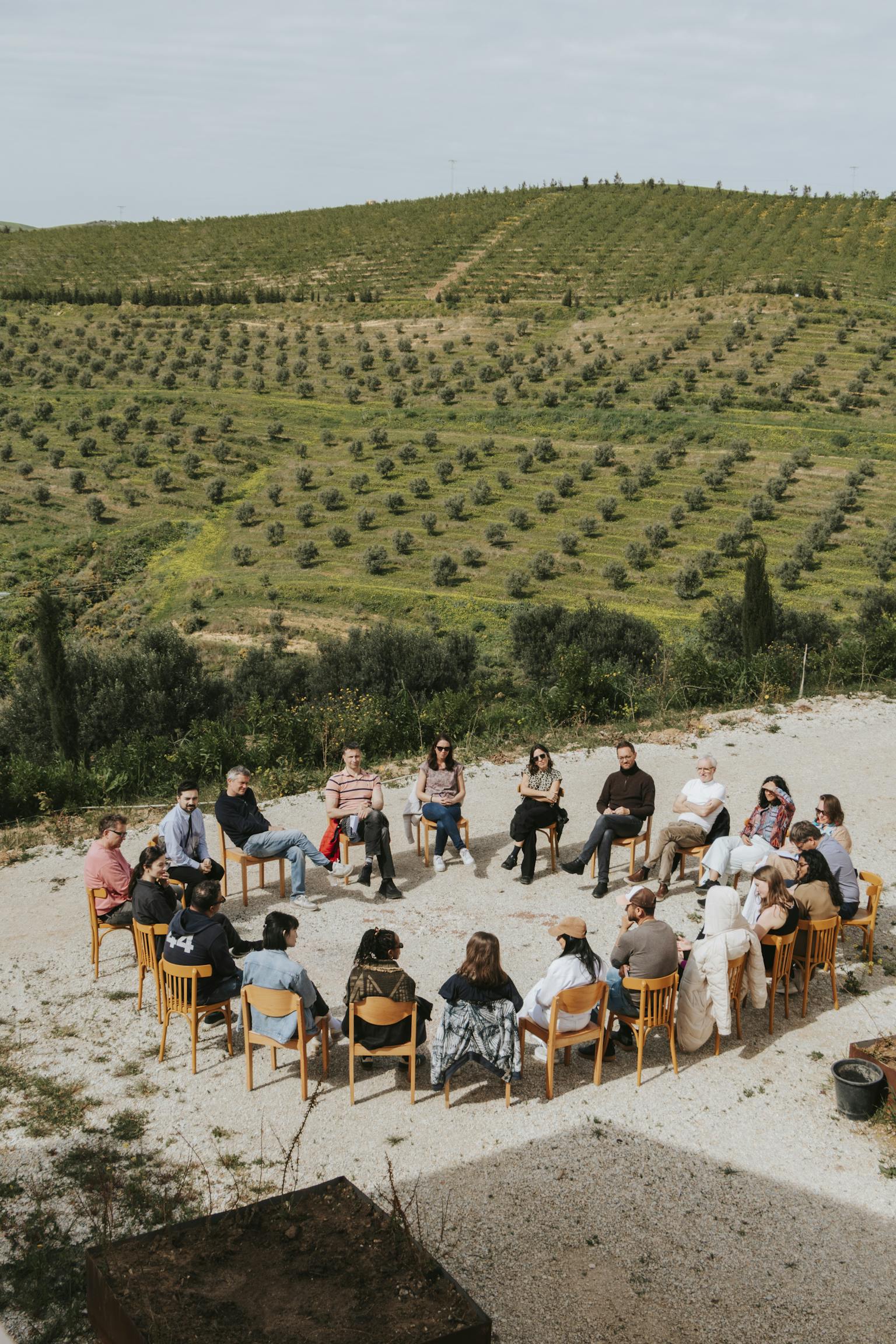
Talking circle by the olive groves, Tilal Utique. Courtesy of KLF 2025.
When I look back over the past twenty years, I do not see a straight line, but a series of turns, detours, and discoveries. This journey was never about executing a master plan. It was about listening, experimenting, learning – and slowly, piece by piece, allowing a vision to take shape.
At its heart was a conviction I hold more firmly today than ever: that culture is not an ornament to society. It is its very infrastructure. It is what allows us to make sense of our histories, to imagine futures not yet visible, and to hold on to our humanity when other systems – political, economic, even social – fall short.
But I will admit something: when I began, I thought the answer was to build. To create institutions of glass and stone that would embody ambition. At one point, I dreamed of a centre designed by Zaha Hadid – daring, visionary, breathtaking – to house our collection. However, my late friend Abdelwahab once offered me advice I have never forgotten: ‘Do not spend your resources on a monument to the glory of a great architect. Spend them on content, on initiatives that can be transformative, that can build bridges where none exist.’ It was not easy advice to hear – or to accept. We did not invest in walls, but in people. In artists whose voices deserved to be heard; in writers, curators, and communities who needed a platform. And in the process, I learned something essential: culture is not housed in architecture; it is housed in relationships, in imagination, in dialogue.
Over time, our work has diversified. From supporting artists to creating platforms, from festivals and residencies to digital conversations and archives designed to support knowledge production, we have endeavoured to generate platforms that provide levels of equitable access to information.
Art is not only aesthetic; it also produces knowledge. It generates speculative, process-based knowledge through collaboration, experimentation, and the rethinking of heritage. KLF foregrounds art as an alternative system of knowledge – one that resists instrumentalisation as ‘soft power’ and instead nurtures openness, critique, and historical depth. Initiatives such as Ibraaz publishing generated critical texts that filled gaps in regional cultural discourse; projects like B7L9, JAOU, and Tilal Utique also democratised access to non-normative knowledge and community-based participation. These activities were critical to our thinking about the present-day iteration of Ibraaz here in London insofar as art produces knowledge by revealing what official histories suppress, by enabling marginal voices, and by modelling non-hierarchical forms of learning.
In Tunisia and other parts of the Arab world, where state institutions often block initiatives or reduce heritage to bureaucratic management, the function and dissemination of knowledge is urgent – it reconnects people to cultural memory and projects futures otherwise foreclosed. Ultimately, art makes a difference because it embodies hope. Against the lethargy of bureaucracy and the cynicism of politics, art affirms vitality – it insists on possibility, unpredictability, and the right to imagination.
In Tunisia, cultural foundations are tolerated but often curtailed by restrictive laws. By contrast, opening a space in London will create a secure, visible platform for Arab art within one of the world’s leading cultural capitals. London is a site where Arab perspectives can join a global conversation on equal footing. The space will amplify Arab voices beyond the reach of domestic obstruction, allow encounters with diverse publics, and project an alternative cultural diplomacy rooted in solidarity rather than charity.
In a divided world, this is to acknowledge that art matters more than ever because it sustains the human spirit, bridges cultural divides, and produces knowledge otherwise obscured. Art, in sum, makes a difference not by resolving divisions but by transforming them into sites of dialogue, knowledge, and shared hope.
If the past two decades have taught me anything, it is this: culture is most powerful not when it is preserved, but when it inspires. It’s true gift lies in its ability to connect the particular to the universal – to remind us that our future can only be built in relation to others. And so, as we open Ibraaz in London, I do not see it as the end of a journey, but as its continuation.
This centre is not a monument. It is a bridge – a place where the Arab world can speak to the wider world, and where the wider world may find echoes of its own struggles, dreams, and hopes in our stories. This year should have been one of celebration, but with all that is happening in our region and in the world, it became instead a year of recommitment – to the values that brought us here in the first place.
Thank you.

Patrick Chamoiseau
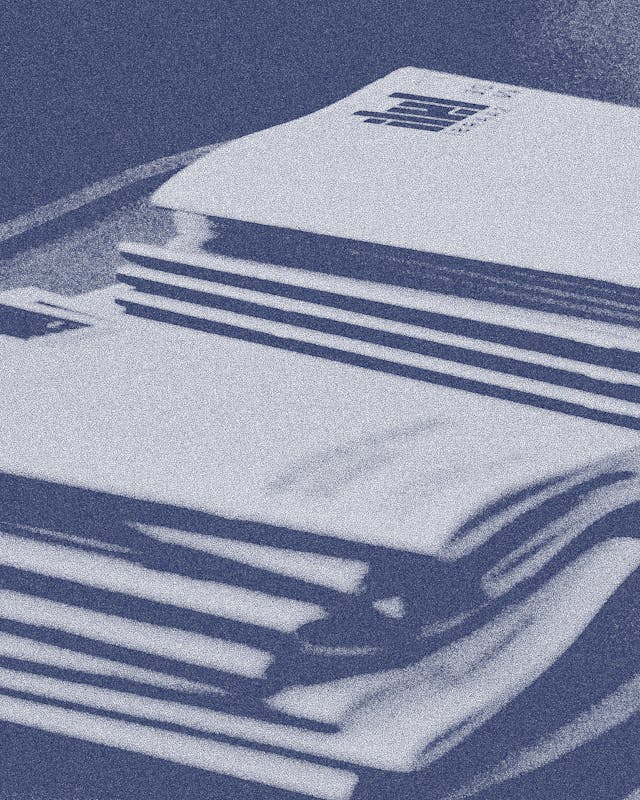
Lina Lazaar, Stephanie Bailey, Shumon Basar
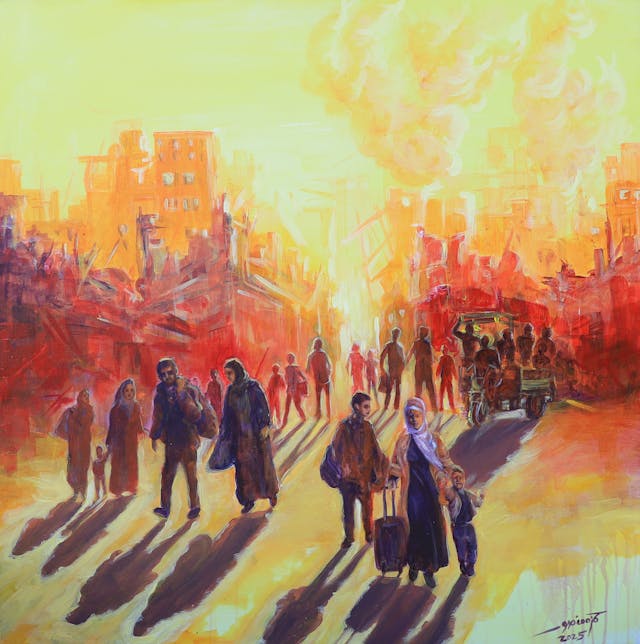
Hamed Ashour